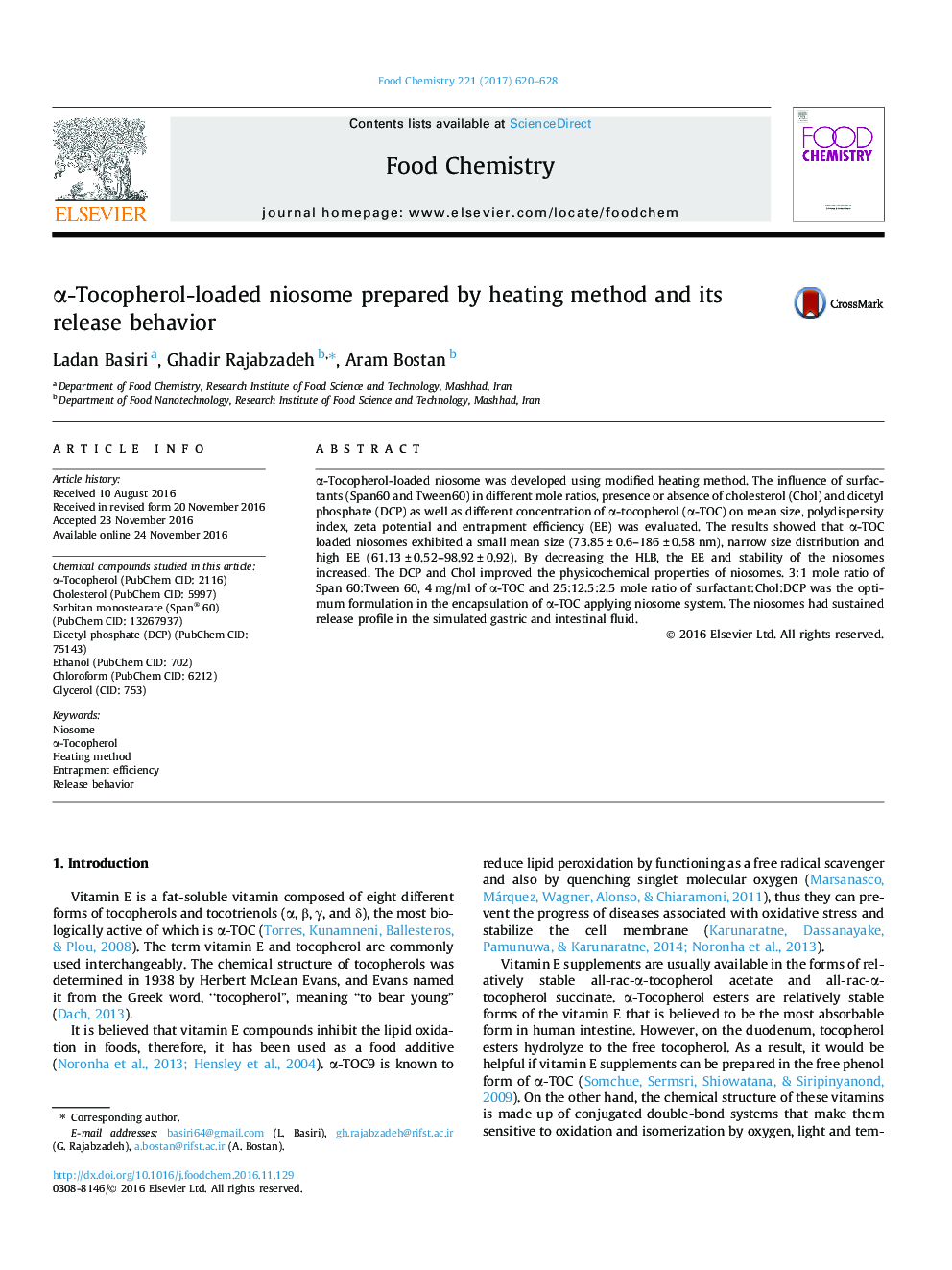| Article ID | Journal | Published Year | Pages | File Type |
|---|---|---|---|---|
| 5133772 | Food Chemistry | 2017 | 9 Pages |
•α-TOC-loaded niosome was performed by green method using span60 and tween60 as surfactants.•By increasing the HLB value of the surfactant mixture, EE of α-TOC increased up to 98.91%.•Presence of DCP and Chol improved the stability of α-TOC-loaded niosome.•α-TOC-loaded niosome had sustained release profile in the simulated gastric and intestinal fluid.
α-Tocopherol-loaded niosome was developed using modified heating method. The influence of surfactants (Span60 and Tween60) in different mole ratios, presence or absence of cholesterol (Chol) and dicetyl phosphate (DCP) as well as different concentration of α-tocopherol (α-TOC) on mean size, polydispersity index, zeta potential and entrapment efficiency (EE) was evaluated. The results showed that α-TOC loaded niosomes exhibited a small mean size (73.85 ± 0.6–186 ± 0.58 nm), narrow size distribution and high EE (61.13 ± 0.52–98.92 ± 0.92). By decreasing the HLB, the EE and stability of the niosomes increased. The DCP and Chol improved the physicochemical properties of niosomes. 3:1 mole ratio of Span 60:Tween 60, 4 mg/ml of α-TOC and 25:12.5:2.5 mole ratio of surfactant:Chol:DCP was the optimum formulation in the encapsulation of α-TOC applying niosome system. The niosomes had sustained release profile in the simulated gastric and intestinal fluid.
